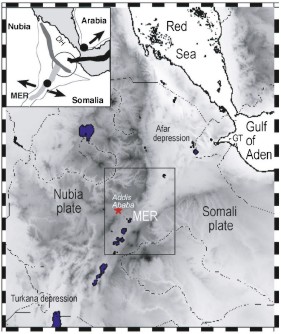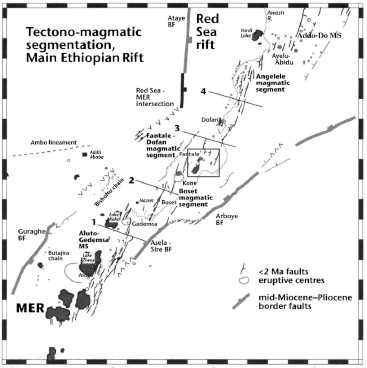
Figure 1: Digital Elevation Map of the Main Ethiopian Rift (MER) with the bordering plateaux. The Fentale magmatic segment is within the rectangle.
Paleomagnetism of the Fentale-magmatic segment, main Ethiopian Rift: New evidence for counterclockwise block rotation linked to transtensional deformation by T. Kidane et al, 2009
Non-technical summary
This paper looks at palaeomagnetic studies around the Fentale volcanoes in the Main Ethiopian Rift (figure 1 and 2). When lavas cool the iron-bearing minerals within them record the orientation of the Earth’s magnetic field at that time. By collecting samples of rocks of known ages and measuring the orientation of the magnetic field preserved within them, it is possible to tell if the rocks have been rotated by plate movements.
28 rock samples of between 2.2 and 0.17 million years old were collected and analysed. The results show that blocks within the area have been rotated in both the horizontal and vertical planes.

Figure 2: Tectonic map of the Main Ethiopian Rift showing the major structural grain and magmatic segments (from Casey et al., 2006).
The horizontal rotations (that is those around a vertical axis) are all about 7 degrees counterclockwise. These rotations are due to the orientation of the rift not being perpendicular to the plate movements; thus faults with different orientations have developed within the rift and the blocks between them rotated to take up the extension (this is known as transtension).
The vertical rotations (those around a horizontal axis) are probably due to the blocks tilting towards the centre of the rift with increasing growth of the faults.
Full paper(PDF file)
